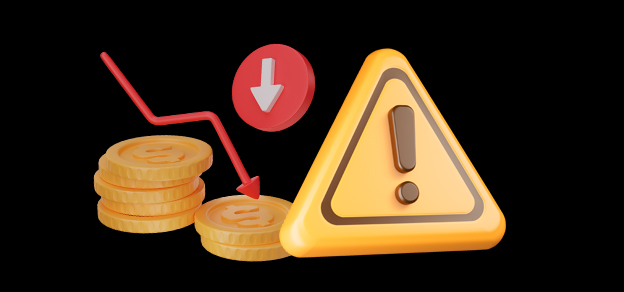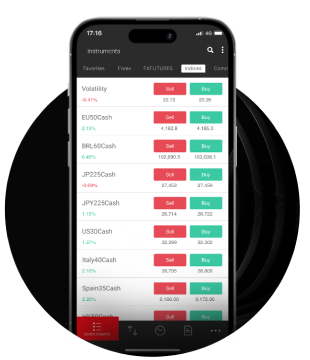Managing risk using orders remains a vital component of trading in financial markets. It has become common practice for traders to use orders by setting specific parameters that dictate how trades are executed. There are several types of orders that are utilised to enter or exit the market, each with its own specific purpose and conditions. These are what we’ll be discussing in this article.

Stop-loss orders
One of the most popular risk management tools used by traders is a stop-loss order. It is essentially an instruction to automatically sell a security if it drops to a certain price level (“stop price”). Traders typically use a stop-loss order to limit potential losses and to reduce the risks associated with unanticipated market movements.
While stop-loss orders help to minimize the potential for losses in volatile markets or due to sudden price fluctuations, they do not guarantee that losses will be avoided completely. In certain circumstances, such as a sudden market crash, it may not be possible to execute the order at the desired price, leading to additional losses.
Four ways to set stops
The four most common methods that traders use to set stops are percentage stop, volatility stop, chart stop and time spot.
- A percentage stop is where a risk stop loss order is set at a predetermined percentage below the purchase price.
- A volatility stop takes into account the volatility of the asset being traded. The stop loss order is set at a level that is a particular multiple of the asset’s average true range (ATR), which is a measure of the asset’s volatility.
- A chart stop is where a trader sets a stop loss order at a level based on technical analysis of the price chart.
- A time stop is where a stop loss order is set at a specific time after entering the trade. Traders adopting short-term trading strategies often set time stops when wanting to exit a trade quickly.

Limit orders
Limited orders are another form of risk management strategy. Using a limit order, a trader can set a specific price (or better) to enter or exit a position. They are an instruction for a trade to be executed at a level that is preferable to the current market price. Limit orders can help a trader reduce risk by setting a maximum price for a purchase or a minimum price for a sale. In other words, these types of orders are placed to either sell above the market at a specific price or purchase below the market.
There are two types of limit orders, entry orders (open a new position) and closing orders (close an open position). Traders commonly use limit orders when there isn’t a pertinent need to enter or exit a trade. Benefits of limit orders include:
- Reduced slippage
- Better control over execution price
- Reduced risk of losses, protecting a trader’s investments and profits
Trailing stop orders
Another way traders manage risk is through the use of trailing stop orders. This order is typically used to follow market uptrends, simultaneously protecting against an abrupt fall in prices.
A trailing stop typically moves relative to price fluctuations. It is usually placed at a specific percentage or amount below market price but moves upwards as the price of an instrument rises. If the market moves unfavourably, the trailing stop order automatically closes the trade to protect the trader against potential loss.
Benefits of trailing stop orders
- Limit potential losses by automatically adjusting stop loss level
- Offer a higher degree of flexibility as traders can adjust their positions relative to changing market conditions
- Remove the emotion from trading decisions through automation
Conditional orders
A conditional order is one that is triggered by one or more specified criteria. Examples include a price change of a specific security, an economic news release, etc. Examples of conditional orders include limit, stop, stop-limit and contingent orders. Conditional orders are commonly used by all types of brokers.
Reasons traders use conditional orders
- Trades can be set up based on goals and speculated outcomes, setting specific conditions to automatically execute
- Help minimise losses by enabling traders to automatically exit unfavourable positions (based on certain criteria)
- Allow traders to plan trades ahead of time
Combining different orders
Some traders use combinations of different orders to manage risk more effectively. For example, a trader may use a stop-loss order to reduce their downside risk and a limit order to take advantage of possible gains. Another example is using a trailing stop order in combination with a limit order to take profits while limiting downside risk.
In conclusion, while executing orders may be effective in managing risk relative to trading, they are not foolproof so caution must be exercised. Financial markets can be volatile and change abruptly. Orders may be executed at prices different from the intended ones, especially during highly volatile market conditions or low liquidity. Traders must track their trades continuously and tweak their trading plans or risk management strategies where necessary.
Practice using orders with a demo trading account
Using a demo trading account to practice your trades and the execution of different types of orders may help you acquire important skills and expertise. Offering a simulated trading environment, with no risk of losing your capital, gives traders a way to test strategies and measure trading outcomes. A demo trading account mimics a live environment, providing traders with a real-life trading experience before moving to a live trading account.

Learn more with IronFX
Regardless of your level of expertise, acquiring an ongoing education in the forex space is important to become a more strategic trader. Learning is an ongoing process, especially when navigating an incredibly active and volatile market that is also constantly evolving. The IronFX School is an online space where global traders can gain access to critical forex educational resources and tools to enhance their trading strategies and outcomes. The IronFX School delivers strategic trading insights through innovative podcasts, educational webinars and seminars, trading videos, an Economic Calendar, financial news, and current market news.
Why IronFX trader?
IronFX is an award-winning global broker, offering 10 取引プラットフォーム and 300+ tradable instruments across several asset classes. This includes forex, metals, shares, indices, futures and commodities. A dedicated, multilingual IronFX team serves more than 1.5 million clients in 180+ countries across Europe, Asia, the Middle East, Africa and Latin America. The FXブローカー also offers multiple account types to suit the needs of different brokers and trading styles.
免責事項:
This information is not considered investment advice or an investment recommendation, but instead a marketing communication. IronFX is not responsible for any data or information provided by third parties referenced or hyperlinked, in this communication.
















